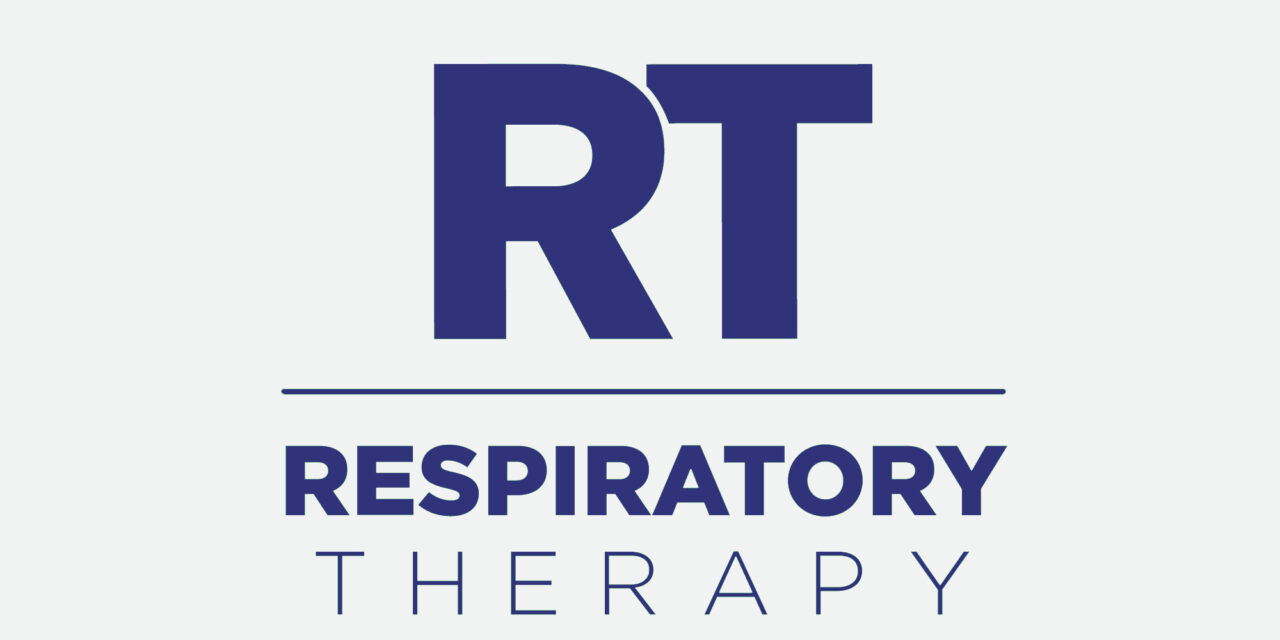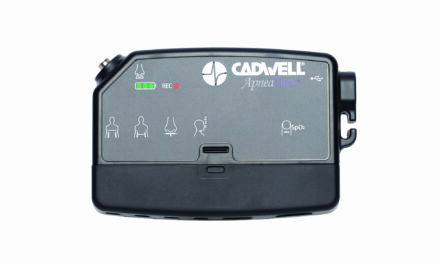Obesity should alert clinicians to possibility of OSA in their sleep-disordered patients.
By Rick Carter, PhD, MBA; and Jim Williams, PhD
As fat stores accumulate, cascades of physiologic processes that contribute to the presentation of obstructive sleep apnea and its sequelae and many other interrelated chronic disease processes are set in motion.1
According to the National Health and Nutrition Examination Survey (NHANES 2003-2004),2 approximately one third of adults age 20 and older in America are overweight, and slightly less than one-third are classified as obese (32.2% males, 30.1 million; and 33.2% females, 34.6 million). More important, the prevalence of overweight and obesity is growing. Broadly defined, obesity is an excess of body fat predisposing individuals to ill health. Obesity is a known risk factor for many disease processes including diabetes, coronary artery disease, high blood pressure, stroke, dyslipidemia, gallbladder disease, osteoarthritis, some forms of cancer (uterine, breast, colorectal, kidney, and gallbladder), and sleep apnea and sleep-disordered breathing (SDB). The clustering of diabetes, hypertension, dyslipidemia, and central obesity is termed metabolic syndrome.
Weight gain is the primary predictor of metabolic syndrome, with waist circumference being a sensitive index, as it is reflective of both abdominal subcutaneous adipose tissue and visceral adipose tissue. Body mass index (BMI: weight [kg]/height [m2]), on the other hand, is an imprecise but useful measure for adiposity, which varies according to age, gender, and ethnicity. It correlates reasonably well with body-fat mass and the risk for obesity-related disorders, thereby making its measurement suitable for first-line assessment of adiposity.3,4 Adiposity assessment through BMI is characterized as follows: BMI (greater than or equal to) 25 to less than 30 is overweight; BMI (greater than or equal to 30 is obese; and BMI (greater than or equal to) 40 is extreme obesity.4
Children are becoming obese at earlier ages, and the number of children afflicted is escalating as are obesity-associated chronic disease processes.5,6 In 2001, nearly 25% of all Caucasian children were overweight, and 33% of African American and Hispanic children were overweight.7 Childhood obesity remains poorly understood, and the long-term sequelae are unknown. Interventions to prevent excess body weight or to reduce weight in children are understudied, but emerging data suggest that the number of hours spent in sleep influences the risk for obesity.8,9 Thus, we have a major epidemic at hand with total costs attributed to overweight and obesity in the neighborhood of $117 billion with direct costs of $61 billion and indirect costs at $56 billion. Recent data estimate that medical spending due to overweight and obesity is approximately $92.6 billion or 9.1% of the US health care expenditures.10 Other estimates suggest much higher costs when all costs, including medical costs, comorbidity costs, workdays lost, restricted activity-days, and bed-days attributed to obesity, are computed.2
Obesity, Sleep Apnea, and Genes
In the past decade, our understanding and mapping of the human genome have accelerated. Candidate genes that demonstrated a high likelihood for modulating risk factors for an array of respiratory disorders (apnea, ventilatory control, airway muscle tone, etc), obesity, and other pathologies are emerging. Genetic studies suggest that the apnea-hypopnea index (AHI), SDB, and obesity are associated with specific genes.11,12 There is evidence for both AHI and BMI on the broad region of chromosome 8q (specifically, 8q24).11 Other regions in this area demonstrated links to abdominal subcutaneous fat and trunk-to-extremity skin-fold ratio (eg, chromosome 4q23). Other genomic regions, whose aligned genes are associated with intestinal fatty acid-binding protein-2 and uncoupling protein-1 genes (correlated to BMI, abdominal fat, and weight loss), are emerging. The 8q21 region is linked to BMI, leptin levels, and abdominal fat. Leptin (an adipose-derived circulating hormone) is involved in appetite regulation, lung growth, and respiratory control.
This helps to explain the coaggregation of OSA, central obesity, hypertension, and type 2 diabetes—metabolic syndrome.11,13 Other candidate genes for obesity (orexins, leptin, adenosine deaminase, and melanocortin-4 receptor) are expressed in brain sites that control breathing.14,15,16 Orexins A and B are hypothalamic peptides that appear to help regulate REM sleep and are entangled in the genesis of OSA, especially arousal and muscle tone. Many other possible candidates exist: neurotrophic factors family receptor alpha-1 gene, fibroblast growth factor receptor-2 gene, polymorphisms in the 5-HT 2A/2C and 5-HT, cysteinyl leukotriene receptors-1 and -2, and the histocompatibility complex antigens, among others.17,18,19,20 Thus, the obesity/OSA process is an entangled, comorbid process that demands extensive study to unravel its many complex and potentially life-threatening regulatory processes.
Obesity and Sleep Disordered Breathing
Obesity imposes a restrictive load on the thoracic cage. Obese individuals have an increased demand for ventilation, the breathing workload is increased, respiratory muscle inefficiency sets in, functional reserve capacity and expiratory reserve volume are decreased, while closure of peripheral lung units increases (increased airway resistance = decreased conductance). Further, obesity enhances ventilation-perfusion mismatch, especially in the supine position and is a classic cause of hypoventilation. Dyspnea advances, especially when the pulmonary system needs to match the metabolic needs of ambulation or exercise. Fatigue of the respiratory muscles may ensue if all conditions are conducive to the imposed chronic overload and, under special circumstances, can predispose the individual to overt respiratory failure.
The adipose tissue role is not only that of a passive storehouse for fat, but also has an important endocrine function synthesizing and releasing compounds into the circulatory system. These peptides and nonpeptide compounds may play a significant role is regulating many physiologic processes. Visceral adipose tissue (VAT) is metabolically active compared to subcutaneous adipose tissue and secretes a number of hormones and proinflammatory cytokines linked with metabolic disorders including SDB.21,22,23,24 This tissue is a significant source of tumor necrosis factor-a (TNF-a), interleukin-6 (IL-6), plasminogen activator inhibitor-1, resistin, lipoprotein lipase, acylation stimulating protein, cholesterol-ester transfer factor, retinal binding protein, estrogens (through P450 aromatase activity), leptin, angiotensinogen, adiponectin, insulin-like growth factor-I (IGF-I), insulin binding protein-3 (IGFBP3), and monobutyrin. Many of these cytokines and hormones also are correlated with the BMI. More specifically, sleep restricted to 4 hours per night or less has been linked to endocrine/metabolic changes associated with a diabetic state (insulin resistance) and weight gain.25 Thus, there is increased interest in the role of insufficient sleep and metabolic disturbances associated with SDB and sleep apnea. From a scientific and medical perspective, the contribution of SDB and obesity has been under-recognized with limited research devoted to the topic, especially in children. Yet, some exciting data is emerging focusing in the area of inflammation and allergic responses, specifically, the leukotriene pathway and its potential for modulation of SDB are emerging.
We are now beginning to appreciate the many influencing and correlated factors that obesity triggers with respect to SDB, especially sleep apnea and the linkage of sleep restriction to weight gain. Reduced sleep is associated with being overweight or obese.9 Excessive daytime sleepiness (EDS) and fatigue are associated with obesity and have a significant impact on an individual’s well-being and public safety. Studies demonstrate that obese subjects without sleep apnea are sleepier than normal controls and experience more depressive symptomology and metabolic disturbances. There is a growing consensus that EDS is a metabolic process—representing the interplay of the hypothalamic-pituitary-adrenal axis and proinflammatory cytokines setting the level of sleep arousals in a 24-hour cycle—while psychologic factors, rather than sleep apnea and sleep disruption per se, account for the reported daytime fatigue.
Sleep-disordered breathing, snoring, and the sleep apnea/hypopnea syndrome are two to eight times more prevalent in men and are associated with obesity, increased neck circumference, and reduced cross-sectional area of the upper airway.26 Data demonstrate that men possess greater fat deposition in the neck, as compared to women, even when corrected for BMI. Additional data indicate that women have a greater ability to defend the upper airway against posture-related changes in airway diameter and have a higher upper airway dilatory muscle tone compared to their male counterparts.27 Studies examining the fat pad suggest that the pad is larger in obese patients and that its size is correlated with frequency of apneas/hypopneas.27,28 Additional data imply that blood flow on the order of 2 to 3 mL/min per 100 g adipose tissue exists and that blood flow can increase 10-fold in this adipose tissue, thereby increasing compression on the airway. However, other data report that although the fat pad is increased compared to less obese controls, it does not statistically narrow the airway and account for the measured sleep apnea.26
Diagnosis
Despite careful screening and a high-quality medical history and physical examination, sleep disorders are typically revealed only by polysomnography in a significant number of individuals. The diagnostic accuracy of polysomnography increases if the clinician has a high index of suspicion for obstructive sleep apnea. Future research may identify specific biomarkers for enhancing diagnostic sensitivity and specificity of polysomnography and assist in monitoring the intervention prescribed.
Interventions
Individuals who are at risk of being overweight or obese and who display a tendency toward SDB should participate in a weight-reduction strategy. The ultimate strategy should be to decrease caloric intake while increasing caloric expenditure and enhancing sleep quality in unison with weight reduction. Regular physical exercise of sufficient intensity, duration, and frequency is advocated.1,29,30 For the obese individual, supportive exercise options should be explored and utilized when possible (eg, water aerobics, low impact exercise, weight training, etc). Patients suspected of sleep apnea should be questioned about positional breathing difficulty and educated on how to avoid or minimize the amount of time spent in these positions during a night’s sleep. Use of alcohol should be avoided as should the use of certain medications. Relocating to a higher altitude should be avoided, as well.
Numerous technologic advances have propelled the ability of the respiratory therapist and clinician to actively treat most patients with obesity and sleep apnea under a variety of conditions. Perhaps the most widely used therapeutic device is CPAP for maintaining airway function and decreasing or eliminating apneic events. Many patients do not tolerate CPAP even under the best conditions possible, though, and bilevel positive airway pressure was introduced to help patients tolerate the required pressures for airway patency, while removing some of the distressing tendencies of CPAP. More recently, auto-PAP in which sensors monitor airway function and automatically adjust pressures within preset levels to control apneic events has been advocated.
Dental appliances are advocated and used with varying levels of success. Removable oral appliances advance the mandible. This repositioning maintains airway patency, reduces breathing disturbances, and improves sleep quality and other associated comorbid processes, if successful. Surgical options exist, and removal of the adenoids and tonsils, nasal polyps and other growths, and excess tissue (uvulopalatopharyngoplasty [UPPP]) from the airway has yielded some success. If anatomic deformities are identified, these are ideal surgical candidates yielding high levels for success. Tracheotomy is used only in severe cases when life-threatening obstructive sleep apnea exists.
Summary
Obesity and its associated comorbid conditions represent significant health concerns for the United States and the world. Many factors affect the balance between ideal body weight, sleep quality, and chronic disease processes. An alarming statistic is the advancing prevalence of obesity in the very young and the emerging health consequences of sedentary living, excess consumption of calories, and limited energy expenditure on a daily basis. It is becoming clear that adipose tissue is active and can influence numerous physiologic processes. The ability of the compounds to interact and predispose individuals to SDB and sleep apnea is an area of ongoing research. As respiratory therapists, we have the ability to diagnose and treat certain forms of sleep-disordered breathing, but we should also start to focus on addressing the underlying process and advocating for preventive measures that will address the growing obesity epidemic.
RT
Rick Carter, PhD, MBA, is professor; and Jim Williams, PhD, is associate professor of health, exercise and sport sciences and physiology, Texas Tech University and Texas Tech Health Sciences, Lubbock. For further information, contact [email protected].
References
- Loredo JS, Ancoli-Israel S, Kim EJ, Lim WJ. Dimsdale JE. Effect of continuous positive airway pressure versus supplemental oxygen on sleep quality in obstructive sleep apnea: a placebo-CPAP-controlled study. Sleep. 2006;29:564-71
- Kawahara S, Akashiba T, Akahoshi T, Horie T. Nasal CPAP improves the quality of life and lessens the depressive symptoms in patients with obstructive sleep apnea syndrome. Intern Med. 2005;44:422-7.
- Pepperell JC, Ramdassingh-Dow S, Crosthwaite N, et al. Ambulatory blood pressure after therapeutic and subtherapeutic nasal continuous positive airway pressure for obstructive sleep apnoea: a randomised parallel trial. Lancet. 2002;359:204-10.
- Hack M, Davies RJ, Mullins R, et al. Randomised prospective parallel trial of therapeutic versus subtherapeutic nasal continuous positive airway pressure on simulated steering performance in patients with obstructive sleep apnoea. Thorax. 2000;55:224-31.
- Norman D, Loredo JS, Nelesen RA, et al. Effects of continuous positive airway pressure versus supplemental oxygen on 24-hour ambulatory blood pressure. Hypertension. 2006;47:840-5.
- Shivalkar B, Van de Heyning C, Kerremans M, et al. Obstructive sleep apnea syndrome: more insights on structural and functional cardiac alterations, and the effects of treatment with continuous positive airway pressure. J Am Coll Cardiol. 2006;47:1433-9.
- Netzer NC, Hoegel JJ, Loube D, et al. Prevalence of symptoms and risk of sleep apnea in primary care. Chest. 2003;124:1406-114.
- Bixler EO, Vgontzas AN, Ten Have T, Tyson K, Kales A. Effects of age on sleep apnea in men: I. Prevalence and severity. Am J Respir Crit Care Med. 1998;157:144-8.
- Baltzan MA, Kassissia I, Elkholi O, Palayew M, Dabrusin R, Wolkove N. Prevalence of persistent sleep apnea in patients treated with continuous positive airway pressure. Sleep. 2006;29:557-63.
- American Lung Association. Obstructive Sleep Apnea (OSA) or Sleep-Disordered Breathing (SDB). Lung Disease Data at a Glance. 2004. Available at: www.lungusa.org/site/apps/s/content.asp?c=dvLUK9O0E&b=34706&ct=383585. Accessed April 2, 2007.
- Wolk R, Somers VK. Obesity-related cardiovascular disease: implications of obstructive sleep apnea. Diabetes Obes Metab. 2006;8:250-260.
- Wolk R, Somers VK. Cardiovascular consequences of obstructive sleep apnea. Clin Chest Med. 2003;24:195-205.
- Gami AS, Howard DE, Olson EJ, Somers VK. Day-night pattern of sudden death in obstructive sleep apnea. N Engl J Med. 2005;352:1206-14.
- Vorona RD, Ware JC. Sleep disordered breathing and driving risk. Curr Opin Pulm Med. 2002;8:506-510.
- Teran-Santos J, Jimenez-Gomez A, Cordero-Guevara J. The association between sleep apnea and the risk of traffic accidents. N Engl J Med. 1999;340:847-51.
- McNicholas WT. Sleep apnoea and driving risk. European Respiratory Society Task Force on Public Health and Medicolegal Implications of Sleep Apnoea. Eur Respir J. 1999;13:1225-7.
- George CF, Smiley A. Sleep apnea & automobile crashes. Sleep. 1999;22:790-5.
- Krieger J. Therapeutic use of auto-CPAP. Sleep Med Rev. 1999;3:159-74.
- Meurice JC, Marc I, Series F. Efficacy of auto-CPAP in the treatment of obstructive sleep apnea/hypopnea syndrome. Am J Respir Crit Care Med. 1996;153:794-8.
- Hukins C. Comparative study of autotitrating and fixed-pressure CPAP in the home: a randomized, single-blind crossover trial. Sleep. 2004;27:1512-17.
- Senn O, Brack T, Matthews F, Russi EW, Bloch KE. Randomized short-term trial of two autoCPAP devices versus fixed continuous positive airway pressure for the treatment of sleep apnea. Am J Respir Crit Care Med. 2003;168:1506-11.
- Nussbaumer Y, Bloch KE, Genser T, Thurnheer R. Equivalence of autoadjusted and constant continuous positive airway pressure in home treatment of sleep apnea. Chest. 2006;129:638-643.
- Lévy P, Pépin J-L. Autoadjusting continuous positive airway pressure. What can we expect? Am J Respir Crit Care Med. 2001;163:1295-6.
- Ball EM, Simon RD Jr, Tall AA, et al. Diagnosis and treatment of sleep apnea within the community. The Walla Walla Project. Arch Intern Med. 1997;157:419-24.
- Aloia MS, Dio LD, Ilniczky N, Perlis ML, Greenblatt DW, Giles DE. Improving compliance with nasal CPAP and vigilance in older adults with OSAHS. Sleep Breathing. 2005;5:13-21.
- Sin DD, Mayers I, Man GC, Pawluk L. Long-term compliance rates to continuous positive airway pressure in obstructive sleep apnea: a population-based study. Chest. 2002;121:430-5.
- Drake CL, Day R, Hudgel D, et al. Sleep during titration predicts continuous positive airway pressure compliance. Sleep. 2003; 26:308-11.
- Weaver TE, Kribbs NB, Pack AI, et al. Night-to-night variability in CPAP use over the first three months of treatment. Sleep. 1997;20:278-83.
- McArdle N, Devereux G, Heidarnejad H, Englaman HJ, Mackay TW, Douglas NJ. Long-term use of CPAP therapy for sleep apnea/hypopnea syndrome. Am J Respir Crit Care Med. 1999;159:1108-14.
- Haniffa M, Lasserson TJ, Smith I. Interventions to improve compliance with continuous positive airway pressure for obstructive sleep apnoea. Cochrane Database Syst Rev. 2004;CD003531.
- Epstein L. Promoting effective CPAP therapy for obstructive sleep apnea. Sleep HealthCenters® Newsletter. November 2003. Available at: www.sleephealth.com/PDF_files/Newsletter2003-11.pdf. Accessed April 2, 2007.









